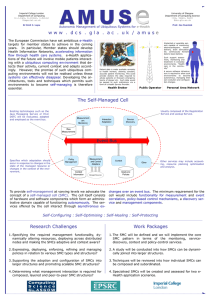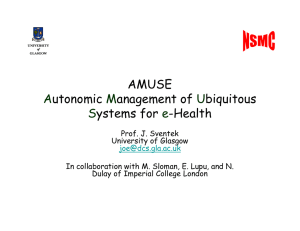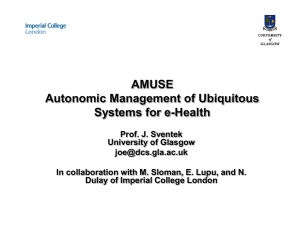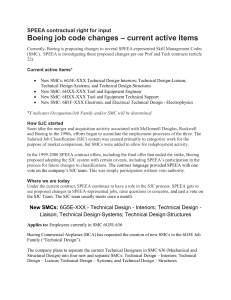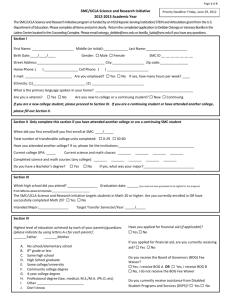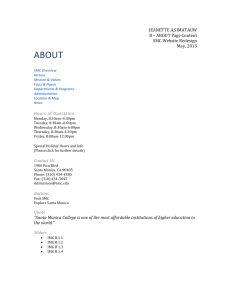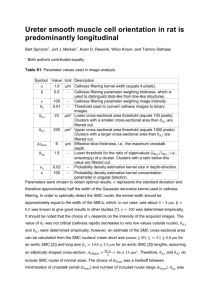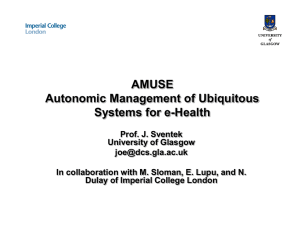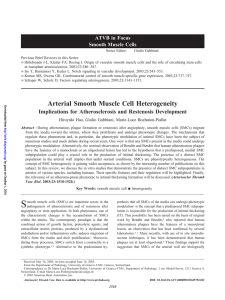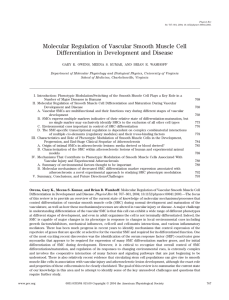Self-Managed Cell Architecture Layered and Federated SMC Structures Work Package 1
advertisement
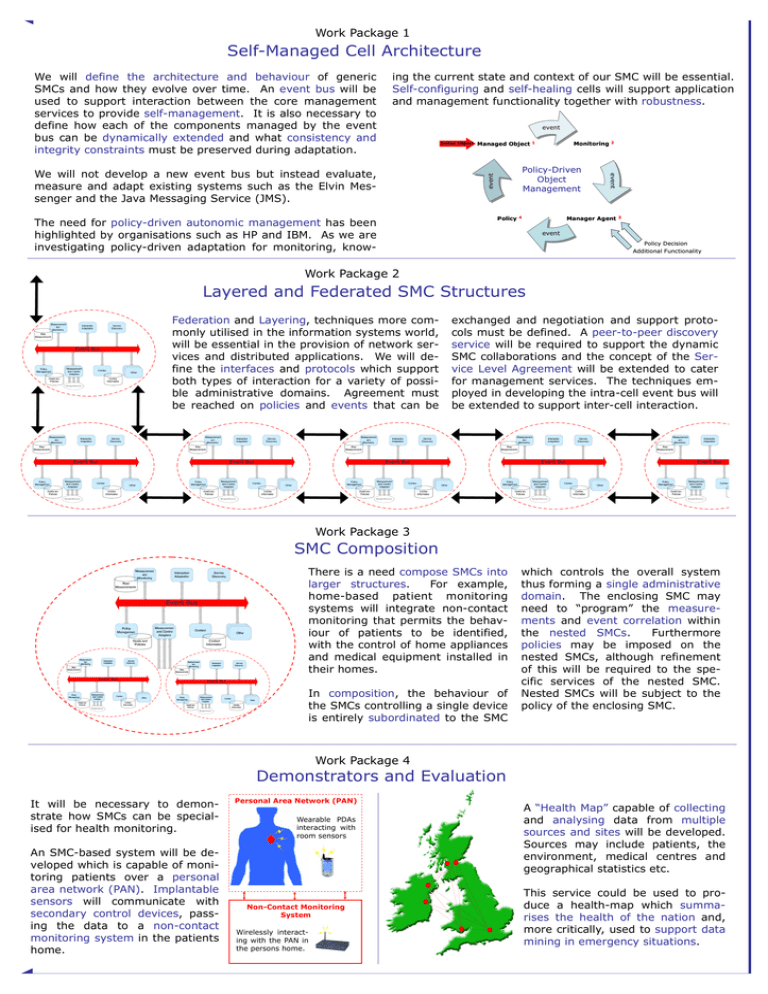
Work Package 1 Self-Managed Cell Architecture ing the current state and context of our SMC will be essential. Self-configuring and self-healing cells will support application and management functionality together with robustness. The need for policy-driven autonomic management has been highlighted by organisations such as HP and IBM. As we are investigating policy-driven adaptation for monitoring, know- Initial Object Managed Object Monitoring 1 Policy-Driven Object Management Policy 2 event We will not develop a new event bus but instead evaluate, measure and adapt existing systems such as the Elvin Messenger and the Java Messaging Service (JMS). event event We will define the architecture and behaviour of generic SMCs and how they evolve over time. An event bus will be used to support interaction between the core management services to provide self-management. It is also necessary to define how each of the components managed by the event bus can be dynamically extended and what consistency and integrity constraints must be preserved during adaptation. Manager Agent 4 3 event Policy Decision Additional Functionality Work Package 2 Layered and Federated SMC Structures Federation and Layering, techniques more commonly utilised in the information systems world, will be essential in the provision of network services and distributed applications. We will define the interfaces and protocols which support both types of interaction for a variety of possible administrative domains. Agreement must be reached on policies and events that can be exchanged and negotiation and support protocols must be defined. A peer-to-peer discovery service will be required to support the dynamic SMC collaborations and the concept of the Service Level Agreement will be extended to cater for management services. The techniques employed in developing the intra-cell event bus will be extended to support inter-cell interaction. Work Package 3 SMC Composition There is a need compose SMCs into larger structures. For example, home-based patient monitoring systems will integrate non-contact monitoring that permits the behaviour of patients to be identified, with the control of home appliances and medical equipment installed in their homes. In composition, the behaviour of the SMCs controlling a single device is entirely subordinated to the SMC which controls the overall system thus forming a single administrative domain. The enclosing SMC may need to “program” the measurements and event correlation within the nested SMCs. Furthermore policies may be imposed on the nested SMCs, although refinement of this will be required to the specific services of the nested SMC. Nested SMCs will be subject to the policy of the enclosing SMC. Work Package 4 Demonstrators and Evaluation It will be necessary to demonstrate how SMCs can be specialised for health monitoring. An SMC-based system will be developed which is capable of monitoring patients over a personal area network (PAN). Implantable sensors will communicate with secondary control devices, passing the data to a non-contact monitoring system in the patients home. Personal Area Network (PAN) Wearable PDAs interacting with room sensors Non-Contact Monitoring System Wirelessly interacting with the PAN in the persons home. A “Health Map” capable of collecting and analysing data from multiple sources and sites will be developed. Sources may include patients, the environment, medical centres and geographical statistics etc. This service could be used to produce a health-map which summarises the health of the nation and, more critically, used to support data mining in emergency situations.
